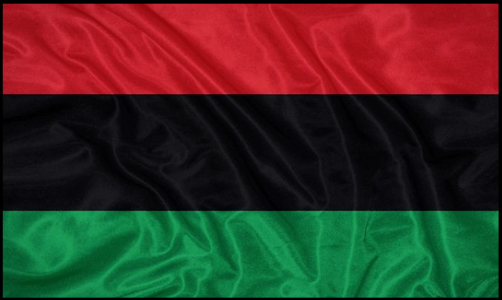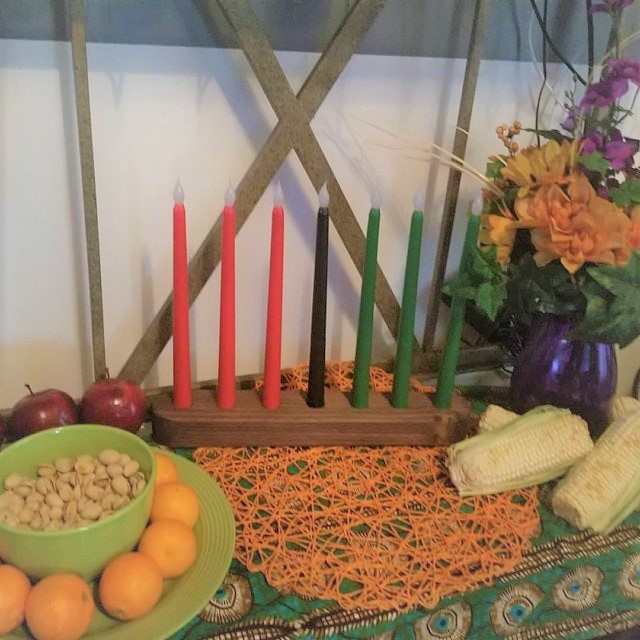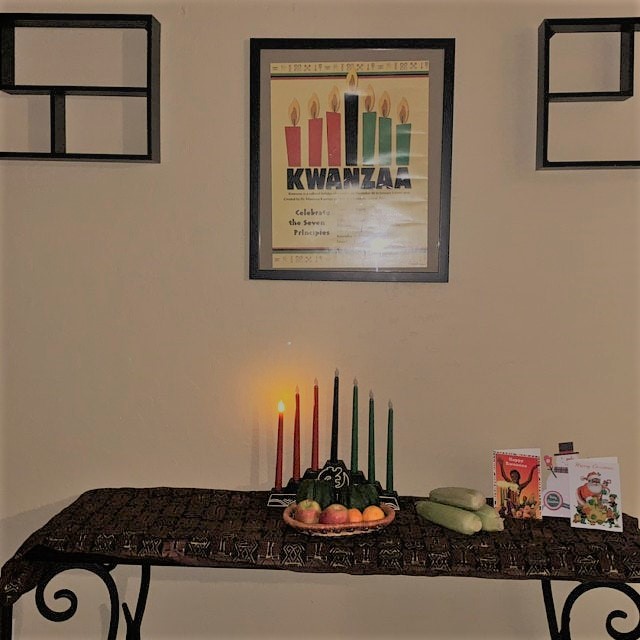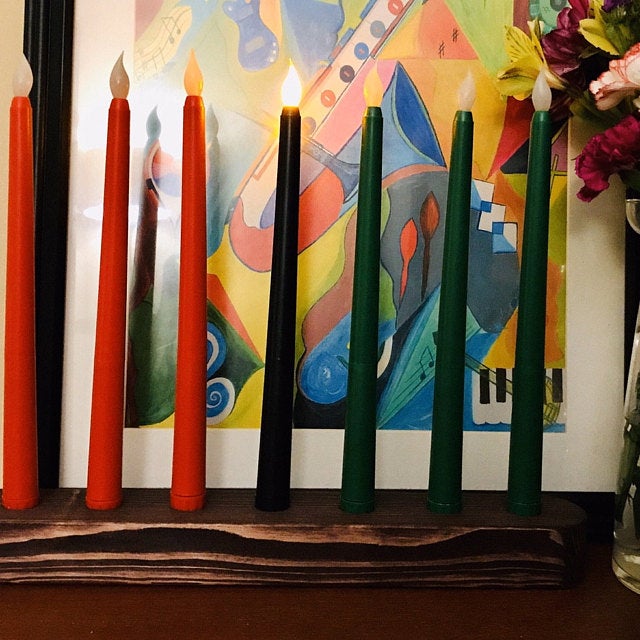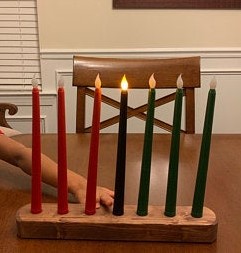The English definition of the word “Kwanzaa” translates to mean “First” or “First fruits of the harvest.” It is a tradition in Africa to celebrate the first harvest before the beginning of the dry season. This is why Dr. Karenga has the representation of the fresh fruit bowl incorporated in the traditional celebratory Kwanzaa display. A successful harvest signals a prosperous year to come.
Other items in the display include a cup, a mat, a candle holder (Kinara), and 7 candles representing the seven days and seven principles of Kwanzaa.

One of the most noticeable and recognized symbols of Kwanzaa are the the red, black, and green colors depicted in the 7 candles for the Kinara. These 3 colors symbolize something special to the African American community and was originally designed into a flag by Marcus Garvey called the “Bendera” but is more commonly known today as the “Pan-African Flag”. These colors collectively have great historical meaning and each color individually represents a part of the African American plight and struggle.
Starting from the top of the flag, the red stripe represents the struggle of the past and present. The black represents unity, togetherness, and solidarity of all Black people. The green represents the land Africans were stolen from and future hopes and dreams of the African American and Black community.
